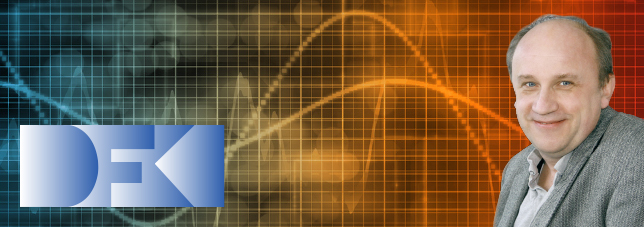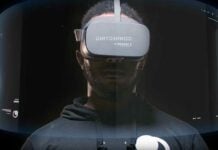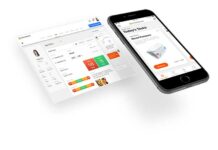Google Glass is currently passing quite obviously through the different lifecycle phases in technology and product development. Discussions regarding price, form factor, applications, function and usability have become embedded in developers’ minds and this is very probably how its creators intended it.
Some analysts predict that the medical sphere is one of the contexts where a head-mounted device could be of added value. Paul Lukowicz, professor at the Technical University of Kaiserslautern / TU, Germany and member of the German Research Center for Artificial Intelligence has been involved in several emperical studies revolving around the use of what he prefers to call near-the-eye computer technologies in the educational and medical sphere.
We interviewed him on what he believes is the real advantage for medical professionals as well as barriers to introduction of the glass in this field.
What are the most practical application of Google Glass in the medical setting?
“I believe during hospital rounds. I was one of the team members on the research project Wear IT at Work, quite a few years ago. The project inquired with physicians about the possibilities and cons of a wearable device such as Google glass. Physicians were presented with the case where the glass would be used during hospital rounds and the device deployed when patient status needed to be documented. With head gestures the device’s documentation mode was activated, adding observation data such as video recording) to the patient file.
The big advantage is that the device allows for seamless communication with medical assistants and supporting services, allowing for faster and more informed decisions. The ultimate decision will never be made by the device, the approach is different. The medical professional will have relevant data faster and cuts out the time it takes to record, monitor and document data by hand. The device therefore additionally serves as a time management tool, enabling professionals to accomplish lean communication between peers.”
And what are the cons?
“The doctor’s idea of how he or she is perceived for instance is one stumbling block we found and a strikingly strong objection. Medical professionals are status sensitive: the impression as a serious professional in the field was deemed necessary to be upheld and particularly the older generation professionals did not feel comfortable wearing the device for that reason.
The other bottleneck was the assumed problems with patient confidentiality and the negative association of Google in that context. Moreover patients felt uncomfortable with a Cyborg doctor observing them as they felt it was not professional that a doctor needs these tools to execute his profession.
As with regards to the cons: any type of patient data is sensitive material that medical centres and hospital need to are protecting from being used by third parties. The tool here does not change this premise: whether it is a desk-top, X-ray, photo camera or a head mounted computer, medical data in any format needs to be protected at all times. The glass in the medical context will not and should not be connected to external media channels. It is also a challenge for legislators to design specific legal terms for the use of the device and the confidentially guarantees the country’s social system can offer.”
What are the relevant features as of today available on Glass?
“Eye blink recognition, face recognition, activity recognition, voice recognition, interaction between, peers in real-time, enables interaction between researchers and physicians, multi-format cross referencing, documentation, recording and registration and voice-recording.”
Are there important features that the glass 2.0 as of today lacks which make it less than optimized for the medical context?
“The glass device is facing the following challenges: short battery life, as of yet still low quality video images, insufficient memory space for rich formats such as video and audio, tech device is too big and impairs its own use, general public’s privacy concerns, optimisation of the interaction with other medical devices and lastly how interaction with the device is best accomplished: by touch or by head bend.
Why should medical professionals should be open-minded about the use of 2.0 glasses?
“My team researched the use of this device and has documented both the negative aspects medical professionals indicate as well as its potential. The big mistake many people make is that they assume that the glass is replacing static desktop displays when in fact they allow for fasters documentation of a larger variation of data types and a faster and more precise cross referencing. And that is a plus for the application of these near-the-eye worn devices. Not including the fact that the medical professional literally has his or her hands free to do core-physician tasks such as observe and examine.
The glass device reduces the distance between the machine and the human. Information and knowledge is transferred between these entities in a highly optimised ICT surroundings in about 2 seconds. By using this device the transferral time is reduced to milliseconds. In the daily routines and in peer reviewing in real time the possibilities for making even better informed decisions and in less time will start to appeal tremendously to both physicians as well as medical assistants. And most importantly to the patient.”
Paul Lukowicz was quoted from this interview by journalist and research coordinator at Brigham and Women’s Hospital Vidya Viswanathan in the article “Is there a place for Google Glass in Hospitals?” published on July 21 in the Health section of the website.















